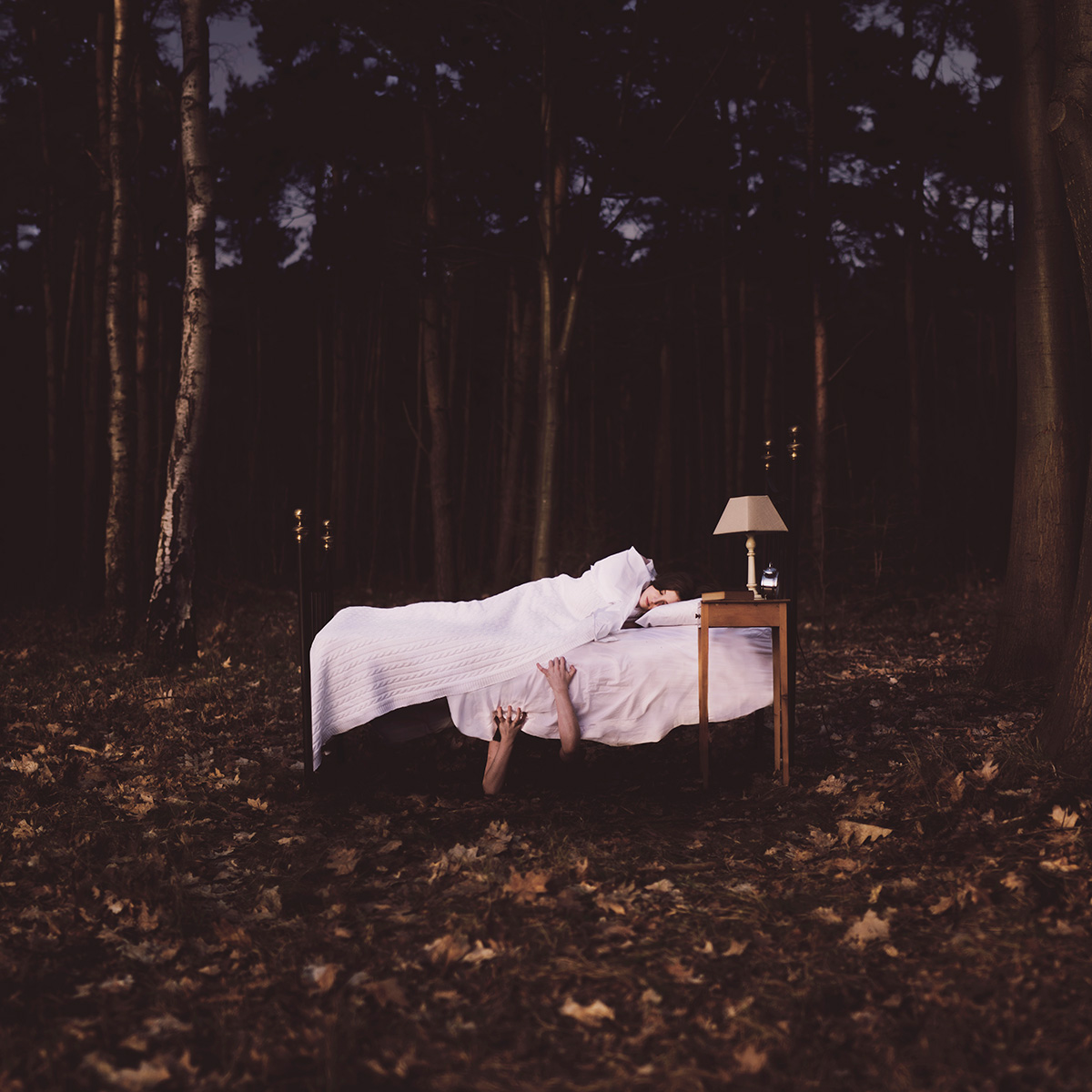Some people dream of being chased. Others dream of going to the bathroom but, for whatever reason, never make it there in time. Some dream about being naked in a public place, surrounded by people. And others dream of all this, of a mix of all this, and of so much more than all this, because nightmares belong to a category in our mind where, for better and for worse, the only limit is our imagination.
Some people dream of being chased. Others dream of going to the bathroom but, for whatever reason, never make it there in time. Some dream about being naked in a public place, surrounded by people. And others dream of all this, of a mix of all this, and of so much more than all this, because nightmares belong to a category in our mind where, for better and for worse, the only limit is our imagination.

I can’t recall a time in my life when I haven’t had nightmares. As a child, I dreamt of monsters, yes, but the “bad dreams” my pediatrician told me about were always more complex than what my age could ever convey. At night, when the lights were off and I was supposed to sleep like an angel, my mind wandered over to occult lands, where all of mankind’s problems were found concentrated – the end of the world, death (my own, of others, but mostly of others), the possibility of having an accident that would prevent me from writing ever again (footnote: I started having this “fear” at around six-years-old, I learned to write at four), places I had never seen before consumed by fire, ships with thousands of passengers sinking into the deepest seas. As time went on, “sleep” became a problem. The constant state of alert that those “visions” demand of me and the bothersome reminder that I had to deal with them, made a night owl out of me way before my adult age. I would rather stay awake. I would rather “not see any of that”. During my teenage years, the nightmares began to materialize, becoming filled with perfectly outlined faces – the “characters” stopped being nameless individuals, given their place to friends, family, acquaintances – and that made everything even more complicated. Only someone with no blood on their veins would be able to remain indifferent to dreaming about the death of someone they’re close with. Especially if that someone dies a few weeks later… Fast forward to adulthood. Then, my nightmares took on a different route.
The one of guilt, as years of therapy now suggest. I started having “recurrent dreams” where everything ended terribly because their leading lady, me, wasn’t able to carry out a given specific task. Some eligible-to-be-shared examples? Not being able to break before a very tight curve, or failing to graduate because I’d fall asleep, ad aeternum, on the date of my last exam. Getting out of bed became a synonym of sweat, migraines, and shivers. Plus, confusion. An immense sense of confusion. It’s not worth it to discuss all the (bad) premonitions I’ve had, the flying cows I saw talking to D. Afonso Henriques (it’s not that good of an example), the planes I’ve seen crashing, nor the so-called “lucid dreams” (where we’re completely aware that we’re dreaming, though the dream is something terrible), but it might be worth mentioning the most dreadful of all nightmares, the one which, for those who’ve experienced it, resembles a small death: sleep paralysis. We’ll talk about that later. Generally speaking, and so that neither the author of this text nor the reader who, by any chance, could also be prone to this nightmare incidence, feel like an alien, it’s important to know that science assures that at least half of the world’s population suffers from nightmares sporadically and that between 2% and 8% of adults have them frequently. As they occur in the deepest form of sleeping, what we’ve grown accustomed to knowing as REM (Rapid Eye Movement), characterized by an intense level of cerebral activity, it is possible to have up to six nightmares in a single night’s sleep. Which doesn’t necessarily mean, though, that we’ll recall them all. Nor that all of them are violent, or even able to leave a “dent” in our way of acting and being.
However, in clinical terms, what constitutes a nightmare? We asked that same question to Raquel Dias – A Clinical Psychologist at the FJS team – Clinical Psychology, Coaching, and Consultancy. “From a clinical point of view, nightmares are oneiric consequences which, for the most part, involve situations that provoke negative emotions and feelings. Essentially, it is during sleep that we process all the information we’ve built up in our brain during the day. For many, this experience becomes incredibly intense and when it happens in a significant way it can even cause a sense of persistent discomfort, implicating a generally grave lack of psychological adjustment.” And why do we have them? Do they have any specific function, is there an explanation as to why they exist? “Still to this day, it is not clear why we have bad dreams, why they happen. We could think they are there to help us deal with situations that cause us discomfort, fear, and anxiety and with which we avoid confrontation during the day. It’s during sleep that our brain organizes this information, and it is through those intense episodes we experience that those negative and unpleasant sensations surface.” Freud explains, then. But not even that explains it. Because those who live with nightmares know none of this will help relieve the prospect of yet another night of terror. It’s as if, through pictures, sounds and second-rate episodes, our subconscious wanted to tell us something we can’t quite understand. The message, whatever it is, is not at all clear – it never will be – and Raquel Dias knows this well. “Our brain is fascinating! It often protects us from traumatic events, which cause incredibly psychological pain, ‘erasing’ from our memory those same episodes. In dreams, if we wake up soon after they unraveled, we can remember them and explain everything that happened. On the contrary, if we wake up later, we give no time for our brain to memorize what just happened. For many people, these experiences tend to fly under the radar, where they don’t realize what they’ve lived through during the sleeping period, whether it was a nightmare or a very pleasant dream.”
And if some live tormented by the idea of constant, recurrent nightmares, others attest that they have never, under any circumstance, been able to remember having a “bad dream”. Is that possible? “Nightmares appear during the REM sleep phase, a time where brain activity is at its highest. Children and teenagers have more REM sleep time, which justifies the prevalence of these episodes during our childhood. It’s fairly common to hear stories from parents speaking of their experiences with their kids’ nightmares as terrifying, but it’s a natural process that ends up fading out with time, with maturity. On the other hand, it’s important to consider some of the causes for the occurrence of nightmares: higher levels of stress, traumatic life events, depressive symptoms and sleep deprivation are some of the factors that can justify the increase of these episodes during sleep, which may or may not be remembered upon awakening. On the contrary, there are people who ‘sleep like a log’ and that experience a unique, single sleep phase through the whole night. In these cases, even if they could have dreamt about something less than pleasant in their sleep, people don’t recall any ‘bad dreams’”. Back to the beginning. To the life we live, what we do, the things we think about, our rhythm of work. To how much we don’t exercise, to the meditation we haven’t started, to the Mediterranean diet we’ve neglected. Is it wise to assume that people who are more prone to having nightmares might have a more agitated day and that, in the long term, that may affect their lifestyle? “When repeatedly and for a long duration in time, nightmares can become highly disruptive. For some people, these episodes are easily remembered in the moment of waking up, which can often cause fear, tiredness, and a long-term feeling of lack of well-being. Bad sleeping habits could also contribute to the increase in irritability, anxiety build-up and depressive mood. This emotional misgovernance might have a negative impact on the general function of our being, compromising our performance in every aspect of our lives”, Raquel Dias explains.
If all of this is bad, nearly appalling, there’s yet another very particular “state of somnolence” which, even if not a perfect fit for the nightmare category, it still is, at least for those who’ve experienced it, the worst possible scenario: sleep paralysis, a particularly traumatic disorder where individuals, though they are asleep, wake up (no, there’s no semantic error here), feel a temporary paralysis of their body, and find themselves incapacitated to perform any movement at all; usually it is accompanied by hallucinations, such as seeing or feeling someone close to their bed, and provokes dreadfully intense levels of panic and fear. For many decades, sleep paralysis was ignored by science because testimonies were too esoteric – besides the frequent delirium, almost all the narratives of those who have experienced that feeling used the expression “I felt like someone was killing me”. However, this condition has been around since the beginning of time, and the painting The Nightmare (1781) by Henry Fuseli, is considered one of its best interpretations in the field of art. But back to Raquel Dias. Why do we go into this state – or better yet, how do we get out of it? “Sleep paralysis happens during REM, which can give place to some dissociation between body and brain. To sum up, our mind is working but the body is unresponsive to stimuli! The primary causes might be associated with several periods of sleep deprivation, anxiety, irregular schedules, or bad sleep hygiene. Sleep paralysis occurs, for the most part, right after waking up but there are statements where some have experienced it when trying to fall asleep. Though of short duration, those minutes are known to cause a lot of anxiety, fear, and dismay. The paralysis isn’t considered as dangerous nor life-threatening, since all organs continue to function normally.” Here’s the main point of this story, if there is one: does it make sense to assume that people with very stressful lives, subject to high levels of pressure, will perhaps be more prone to having nightmares? “Yes. Stress, anxiety and a fast-paced lifestyle are often associated with an increase of the frequency of these episodes. That’s why it is so crucial to focus on ourselves, on the compromise we have with our well-being! Paying more attention to self-care helps to regulate sleeping schedules and establishing limits, which would result in a more restoring sleep pattern.” So far, so bad. By the look of it, my nightmares will continue to be worse than yours.
Translated from the original article of Vogue Portugal's Creativity issue, published in March 2021.
Most popular



Relacionados




 (1).png)
